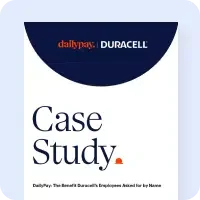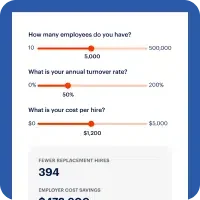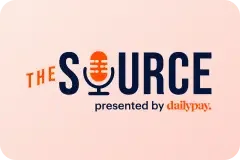As businesses seek to maximize their workforce potential, there is a need to understand and adapt to changing expectations of the full worker spectrum, not just newer ones.
In a recent Source by DailyPay podcast, Terri Gallagher, founder of Gallagher and Consultants, experts on workforce management, pointed out, for example, that 30% of people aged 65 to 74 are expected to remain in the workforce and “their skill sets are very high in demand.”
Overall, “the balance of power is really shifting more toward the workers, versus top down,” Gallagher observed. This is happening as businesses deal with millennials and Gen Xers, whom she described as having “an autonomy of purpose.” She noted that social entrepreneurship is very attractive to them plus, with technological changes, “there’s this definite instant everything now.”
The rise of gig work opportunities also contributes to this change in worker expectations and requires attention from businesses. According to Gallagher, almost half of millennials are using gig workforce platforms to find work. But she also notes that those workers over 55 are “the highest in demand in the gig economy right now.” Older workers are staying in the workpool as she observes that “the talent economy abolishing retirement.”
For employers, “there’s this recognition that there’s a need to adjust practices, and businesses have really fallen behind in using some of these tools to attract and maintain talent,” Gallagher said. Those in HR and talent acquisition “are really struggling with how to accommodate this new workforce, and still fit that into some of these older [workforce] paradigms.”
Businesses, especially in light of the need to adapt operations due to the pandemic, are waking up. The very difficult adjustments needed because of COVID-19 created “this really great perfect storm of things to disrupt some models that maybe didn’t work,” according to Gallagher. “We’ve had basically 10 years of digital workforce transformation in three months, and the workforce has become more distributed,” she said.
Much of the dynamics behind the changing workforce pool has been spurred on by new technological tools workers expect to leverage in their jobs. HR and talent acquisition are asking: “Where do we start? What platforms do we use? What technology do we use?”
An example of that is on-demand pay, also known as earned wage access. “When you look at a lot of these workers that are coming in as independent consultants . . . they’re paid instantly,” said Gallagher. “Why can’t we translate this into this new workforce environment so we’re now accommodating the worker?”
“I think that this is something that needs to be part of that attraction strategy.”
Gallagher said businesses need to rethink the employee value proposition by recognizing “the way they want to work.” Employers need to start “helping employees at all levels understand how they can benefit from arrangements made from these new platforms,” she said.
With businesses adapting to this changing workforce climate and breaking down old workforce paradigms, what about the government?
Gallagher said: “I’m certainly not a political analyst, but everything about Biden’s platform is that he’s very much a proponent of ensuring that workers are treated with dignity, and that they receive the paid benefits and workplace protections that they deserve . . . but I can tell you, with a lot of people in my space, the gig workforce space, there’s some concern.”
The concern is around efforts, such as in California, to fit this potential third type of worker in with longstanding, existing definitions of employment, an effort that was diluted somewhat with the passage of state Proposition 22 in the most recent election. “Again we’re getting back to that model that is aligned with something that is no longer relevant — an employment construct that went out of business and that doesn’t really apply to the way that we work today,” Gallagher said.
President Biden has “got to be a bit more creative and strategic around how he executes on what this looks like, and maybe consider that third category of worker,” Gallagher said. “I think we have to be careful. It’s like touching butterfly wings. If you put too much regulatory rigidity constraints around some of these alternative sources of income, they’re going to go away, and so I think that’s the balance.”
You can access the full podcast and subscribe to other Source by DailyPay episodes here.
DailyPay is the recognized gold standard for on-demand pay delivery, sometimes called earned-wage access, and also partners with the Bipartisan Policy Center to help bring more awareness of policies that can assist Americans in building financial security.
For additional resources on this topic, see:













